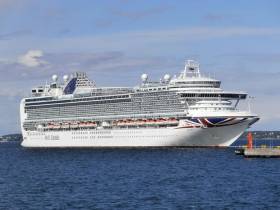Displaying items by tag: French Fuel Fine
Captain of Cruiseship Fined €100,000 for Using Dirty Fuel
#Cruiseliners - A captain of a cruise ship found to be burning fuel with excessive sulphur levels has been fined €100,000 (£88,500) in a Marseille court, the first such ruling in France.
The prosecution writes The Guardian was intended to signal a new seriousness in tackling pollution from cruise ships after a spot-check in March on the Azura, operated by P&O Cruises, found it contained unauthorised bunker fuel.
The American captain, Evans Hoyt, knew the fuel was illegal – it contained 1.68% sulphur, 0.18% above the European limit – and the company was using it to save money, prosecutors said during the trial.
The judge handed Hoyt a fine of €100,000, but specified that the parent company of P&O, the US-based Carnival, should pay €80,000 of the sum. The company had “wanted to save money at the expense of everyone’s lungs”, the prosecutor Franck Lagier told the court in October.
A recent report in the journal Nature attributed 400,000 premature deaths and 14m cases of childhood asthma a year to emissions from dirty shipping fuel.
A spokesman for Carnival said: “The Carnival group carries over 12 million guests on its vessels each year and takes its legal and moral obligations towards the protection of the environment very seriously indeed. We were therefore very disappointed to be prosecuted for this offence, which was based on a European law the French environment ministry had explicitly informed the cruise industry would not be applied to cruise ships and which, in any event, has still not been properly implemented. The captain was using the fuel in good faith, as directed by us, based on our understanding of the law. We have lodged an appeal and will consider the full decision of the court once it is available.”
For more including the port of Marseaille click here
Afloat adds the 3,100 passenger capacity cruiseship has visited Irish ports among them Cork (Cobh) with a first call in 2010.
A sister of the 'Grand' class ship, Carribean Princess Afloat previously covered in 2016 was then given a record fine for dumping oil using a so called 'magic pipe' within UK waters three years previously.
The cruiseship has visited Irish ports too notably in 2017 when making the most calls of any cruiseship to Dublin Port with a scheduled 13 calls alone to the capital.
























































